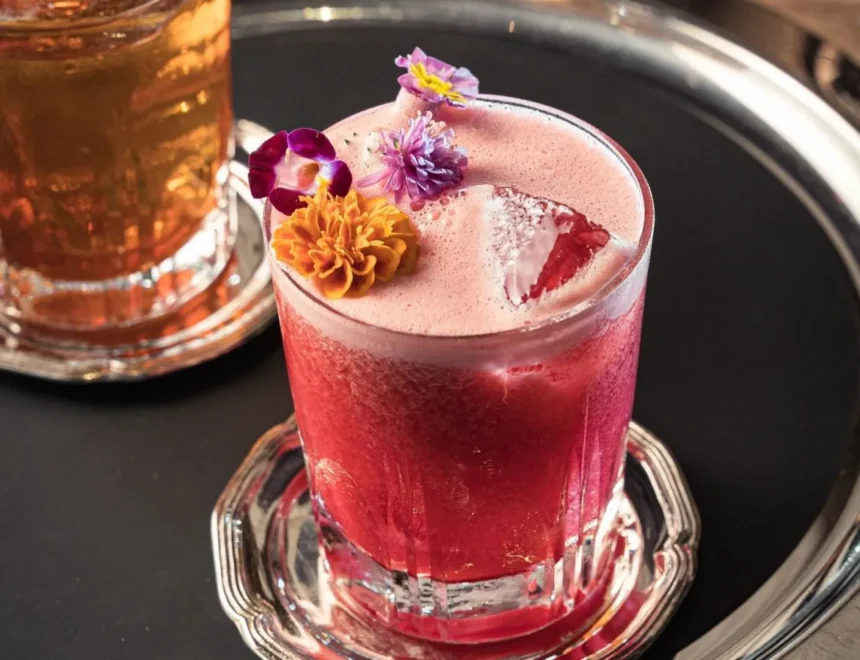Introductiont o 50/50 Bars
When it comes to nostalgic summer treats, few are as iconic and beloved as the 50/50 Bars. With its perfect blend of creamy vanilla and rich chocolate, the 50/50 bar has been a staple in ice cream carts, convenience stores, and freezer aisles for generations. This simple yet satisfying frozen treat has stood the test of time, captivating the taste buds of both young and old alike. In this article, we’ll explore the history of 50/50 bars, their ingredients, variations, cultural significance, and why they continue to be a favorite in the world of frozen desserts.
Origins and History
The 50/50 Bars, as the name suggests, is characterized by its split composition: half vanilla ice cream and half chocolate coating. While the exact origins are somewhat murky, these types of two-flavor ice cream bars gained popularity in the early to mid-20th century, coinciding with the rise of mass-produced frozen desserts.
One of the earliest known versions of the 50/50 Bars was introduced by the Good Humor company in the 1950s. Good Humor, established in 1920, revolutionized the ice cream truck industry by creating portable, easy-to-eat frozen treats that could be enjoyed on the go. Their 50/50 Bars became a staple in their lineup, offering a convenient, delicious option for kids and adults alike. The simplicity of its design, combined with the satisfying contrast of flavors, made it an instant hit.
Over the decades, the concept of a dual-flavor ice cream bar spread across brands and regions. Today, many manufacturers produce their own versions, often adding unique twists to appeal to modern palates.
Composition and Ingredients
At its core, a classic 50/50 Bars consists of two main components:
- Vanilla Ice Cream: Made from milk, cream, sugar, and sometimes stabilizers or emulsifiers, vanilla is the base flavor that offers a smooth, creamy texture and a mild, sweet taste.
- Chocolate Coating: The outer layer is typically a chocolate shell, made from cocoa solids, sugar, and vegetable fats. Some versions use milk chocolate, while others opt for dark or semi-sweet chocolate for a richer flavor.
The process of making a 50/50 Bars involves pouring the vanilla ice cream into molds, then partially coating it with chocolate. Once the chocolate layer hardens, the remaining ice cream is added, and the entire bar is dipped or coated in a final layer of chocolate. This dual-layer design ensures that the flavor contrast is distinct and visually appealing.
Variations and Flavors
While the traditional 50/50 Bars features vanilla and chocolate, creative manufacturers and home enthusiasts have experimented with various flavors and additions:
- Chocolate-Vanilla Swirl: Instead of a clean split, some bars feature a marbled swirl of vanilla and chocolate, creating a more integrated flavor experience.
- Other Flavored Coatings: Variations include caramel, peanut butter, or fruit-flavored coatings, offering a new twist on the classic.
- Different Ice Cream Flavors: Some versions replace vanilla with chocolate, strawberry, or even specialty flavors like cookies and cream or mint.
- Dietary Alternatives: With the rise of dietary restrictions, vegan and dairy-free versions are now available, using plant-based milks and dairy-free chocolates.
Cultural Significance
The 50/50 Bars holds a special place in many people’s childhood memories. It’s often associated with summer days, family outings, and simple pleasures. Its portability and easy-to-eat design made it a go-to treat for picnics, beach trips, and school events.
In many communities, the 50/50 Bars is more than just a dessert—it’s part of local culture and nostalgia. For example, in Canada, the 50/50 bar is a familiar sight at convenience stores and ice cream trucks. In the United States, similar dual-flavor ice cream bars are common, though the name “50/50” may vary by region.
The treat also embodies the concept of balance—combining two flavors in one convenient package. Its enduring popularity speaks to Americans’ and Canadians’ love for classic, straightforward desserts that evoke happy memories and simple pleasures.
Why the 50/50 Bars Remains Popular
Several factors contribute to the continued popularity of the 50/50 Bars:
- Simplicity: Its straightforward design and familiar flavors make it an accessible treat for all ages.
- Nostalgia: For many, the 50/50 Bars is a nostalgic symbol of childhood summers and carefree days.
- Convenience: Individually wrapped and easy to eat on the go, it’s perfect for busy lifestyles.
- Flavor Contrast: The combination of creamy vanilla and rich chocolate provides a satisfying taste experience, appealing to a broad palate.
- Versatility: With numerous variations and modern adaptations, the 50/50 Bars can cater to diverse dietary needs and flavor preferences.
The Future of 50/50 Bars
As consumer tastes evolve and demand for healthier options grows, the classic 50/50 Bars is also adapting. Manufacturers are experimenting with:
- Reduced Sugar and Calorie Options: Creating lighter versions that retain flavor without excess calories.
- Organic and Natural Ingredients: Using organic chocolates, natural vanilla extracts, and non-GMO ingredients.
- Gourmet Variations: Incorporating premium chocolates, exotic flavors, and artisanal ingredients for a more sophisticated experience.
Additionally, the rise of artisanal ice cream makers has led to small-batch, handcrafted versions of the 50/50 Bars, elevating it from a simple childhood treat to a gourmet dessert.
Conclusion
The 50/50 Bars remains a beloved icon in the world of frozen desserts. Its simple yet satisfying combination of vanilla and chocolate has captivated generations, offering comfort, nostalgia, and joy with every bite. Whether enjoyed as a quick snack on a hot summer day or as a nostalgic reminder of childhood, the 50/50 Bars exemplifies the timeless appeal of classic treats. As the dessert landscape continues to evolve, this humble frozen delight persists, proving that sometimes, the simplest ideas are the sweetest.
If you’re interested in trying or creating your own variations of 50/50 bars, explore new flavors, or learn about the history of other classic ice cream treats, there’s a whole world of frozen delights waiting to be discovered!



